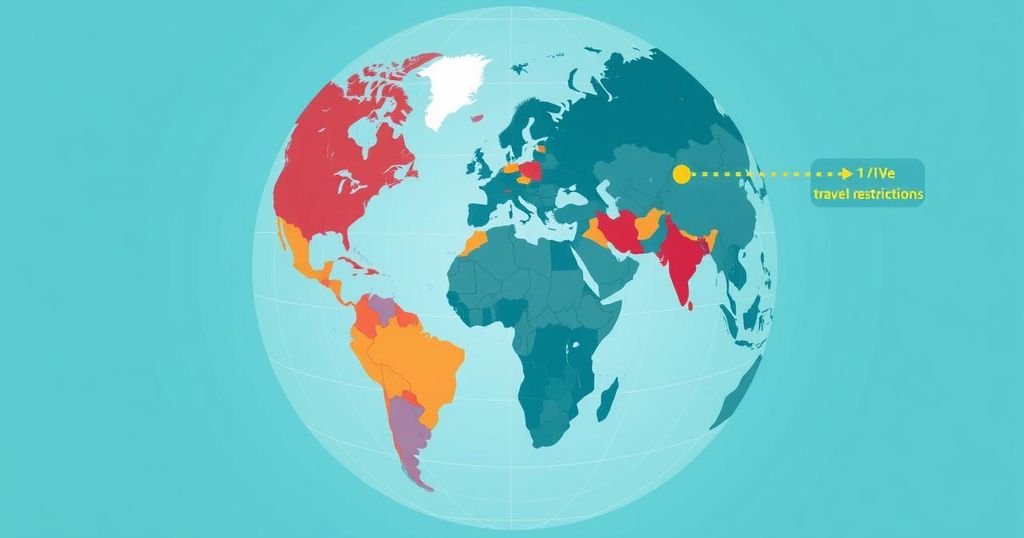Trump Administration Proposes New Travel Ban Targeting 43 Countries

The Trump administration is proposing a new travel ban for up to 43 countries, which includes an outright ban on citizens from 11 nations and restrictions on 10 others. The initiative stems from national security concerns and reflects ongoing internal assessments within the State Department. The legality and implications of these measures for existing visa holders continue to be debated.
The Trump administration is contemplating a new travel ban targeting citizens of up to 43 countries, which would be more expansive than the restrictions enacted during his initial term. Currently, a draft list has been prepared, designating 11 countries for an outright ban: Afghanistan, Bhutan, Cuba, Iran, Libya, North Korea, Somalia, Sudan, Syria, Venezuela, and Yemen. This information comes from officials who spoke on the condition of anonymity, indicating that modifications to the list could occur before it reaches the presidential office.
The proposal includes an “orange” list of 10 countries subject to restricted travel, permitting affluent business travelers access while barring those seeking immigrant or tourist visas. Mandatory interviews for visa applicants would be required for countries on this list, which consists of Belarus, Eritrea, Haiti, Laos, Myanmar, Pakistan, Russia, Sierra Leone, South Sudan, and Turkmenistan.
On January 20, upon taking office, President Trump mandated the State Department to identify nations with insufficient vetting processes that merit a partial or full travel ban. A report was expected within 60 days, with the Bureau of Consular Affairs leading the initiative alongside the Justice and Homeland Security departments and the Office of the Director of National Intelligence.
Several agencies declined to provide comments. However, the State Department has expressed its commitment to safeguarding national security through strict visa processes in alignment with Trump’s directives, while specific deliberations remained undisclosed.
Recent reports indicate that Afghanistan, which fell to the Taliban following the U.S. military withdrawal, might be included in the new travel ban, stirring debate about other countries on the list. The criteria for exemption regarding existing visas or green card holders remain uncertain, raising questions about their status under the proposed measures.
Some countries on the lists have previously been sanctioned during Trump’s first term, yet others represent new additions that primarily consist of Muslim-majority or economically weak nations with unstable governance. The rationale behind including Bhutan is unclear, as it does not share borders with any nations listed.
Notably, the inclusion of Russia poses a contradiction to Trump’s intent of fostering cordial relations with the nation. Similarly, targeting Venezuela may hinder diplomatic overtures beneficial for Trump’s immigration policies. Furthermore, a “yellow” list of 22 countries is drafted, allowing them 60 days to address deficiencies or risk being transferred to the red or orange lists, primarily concerning issues of information sharing or inadequate security practices.
In summary, the Trump administration’s proposed travel ban targets 43 countries, with an emphasis on national security through stringent visa protocols. The classification of countries into red and orange categories highlights a systematic approach to restricting travel based on perceived threats. The evolving nature of these proposals raises significant legal and diplomatic considerations, particularly regarding existing visa holders. As deliberations continue, the impact of these restrictions on U.S. foreign relations and humanitarian concerns remains to be seen.
Original Source: risingnepaldaily.com








